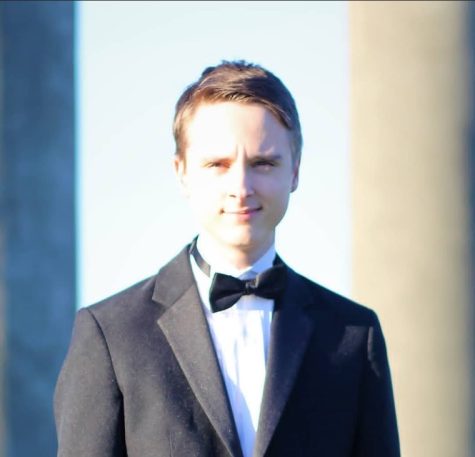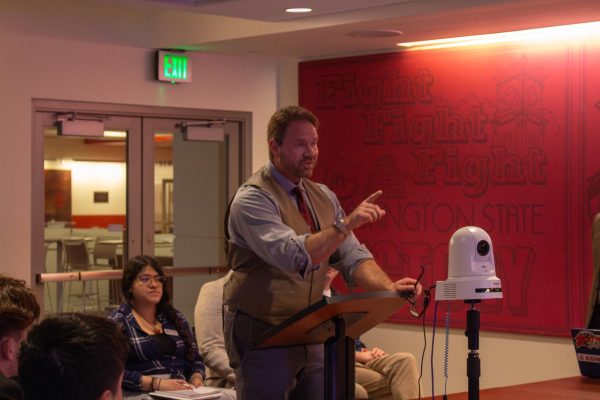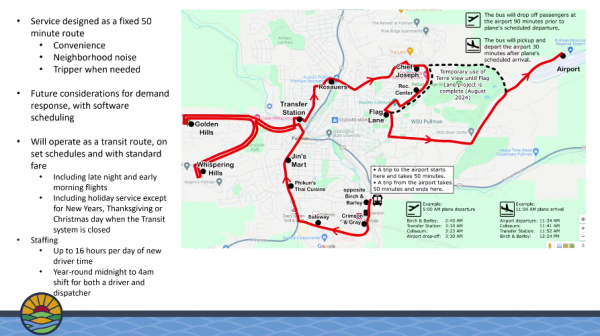Pullman-Moscow airport terminal breaks ground this summer
Terminal important for access to universities, local businesses
COLE QUINN | DAILY EVERGREEN FILE
Pullman-Moscow Regional Airport’s new terminal set to open to the public by May 2024
July 21, 2022
Pullman-Moscow Regional Airport’s new terminal is set to break ground this summer and be completed near the end of 2023.
The Airport Board hopes to begin construction within two or three weeks, said Jon Kimberling, City of Moscow representative on the Airport Board.
“It’s a partnership of our cities and counties and universities,” he said. “Our local airport is our main piece of transportation infrastructure, so it’s very important for our communities.”
The Pullman-Moscow area is not on a waterway or between freeways, making air transportation vital for the community, Kimberling said. The new design for the terminal, which originated in 2019, will help make transportation easier for residents involved with WSU and University of Idaho.
“Our economies are driven in large part by our education facilities. Given that we are not on an interstate highway, our airport has to serve an important role in our traveling in our economy. That airport transportation really is an integral part in the success of our communities,” said Paul Kimmell, Latah County Airport Board representative.
The new terminal will also make it easier for businesses to work in the community. Kimberling said Schweitzer Engineering Laboratories flies planes from around the world from the airport, so accessibility is crucial.
Kimmell said the biggest impact the terminal will have is its ability to make a good first impression on people coming to town.
“The first impression of the community for our international students landing here, we want to make sure it’s representative of our community, our landscape, our quality of life and we want to make sure we can capture that for our flying population as well,” Kimmell said. “I want functionality, but I also want something representative of our community.”
The current terminal is 8,000-9,000 square feet, which is considered too small, Kimberling said.
“We’ve known for the longest time that our terminal was inadequate,” he said. “The appropriate size for a terminal today … is over 60,000 [square feet].”
The project’s funds will come from WSU, University of Idaho and the Federal Aviation Administration. While physically constructing the terminal will cost at least $25 million, the overall project has a greater cost, Kimmell said.
“As we look at it from a $75 million project, probably less than half is the actual building itself,” he said. “The equipment, the jetway bridge, those are probably a million or a million and a half each.”
Kimmell said the terminal, which will be close to the northwest end of the airport, will feature more natural lighting from the windows above it and colors that represent the Palouse.
“Some of the tile and wood finishes will be reflective of the archeology,” Kimmell said. “We’re trying to take advantage of some of the natural landscape colors we see at the Palouse.”
Kimmell said the airport board hopes the construction will be complete by the end of 2023, although there are factors —like contractors and laborers — that can impact that target.
“We’ve targeted [2023], and this is a pretty aggressive construction timeline,” Kimmell said. “The good news is we still have an existing terminal to use if we miss that target.”
One factor that has impacted construction was the recent completion of the new runway, which needed to be built before the terminal, Kimmell said.
“We essentially cut the ribbon on the new runway. We had to fix the runway before we could even start on the new terminal. We widened it to 150 feet, we lengthened it to 7,100 feet and we pivoted it about 6 degrees to the northeast. Everything is up to FAA requirements now,” Kimmell said.
To help research how to make the terminal more beneficial to the community, Kimberling said the Airport Board created an advisory group chaired by himself and Kimmell.
“They wanted our facility to kind of portray that sense of calm and you’re in a good place,” Kimberling said. “Short of sitting in on the meeting, I think the airport did a really good job to try to reach all the different constituency groups in the area.”
Kimmell said it was important to him and Kimberling that every group had representation on the committee for discussions of design and functionality.
“The two universities had representation, Schweitzer had representation, we had a really good number of interests and a number of our frequent fliers,” Kimmell said. “It really was a community-led effort.”






















